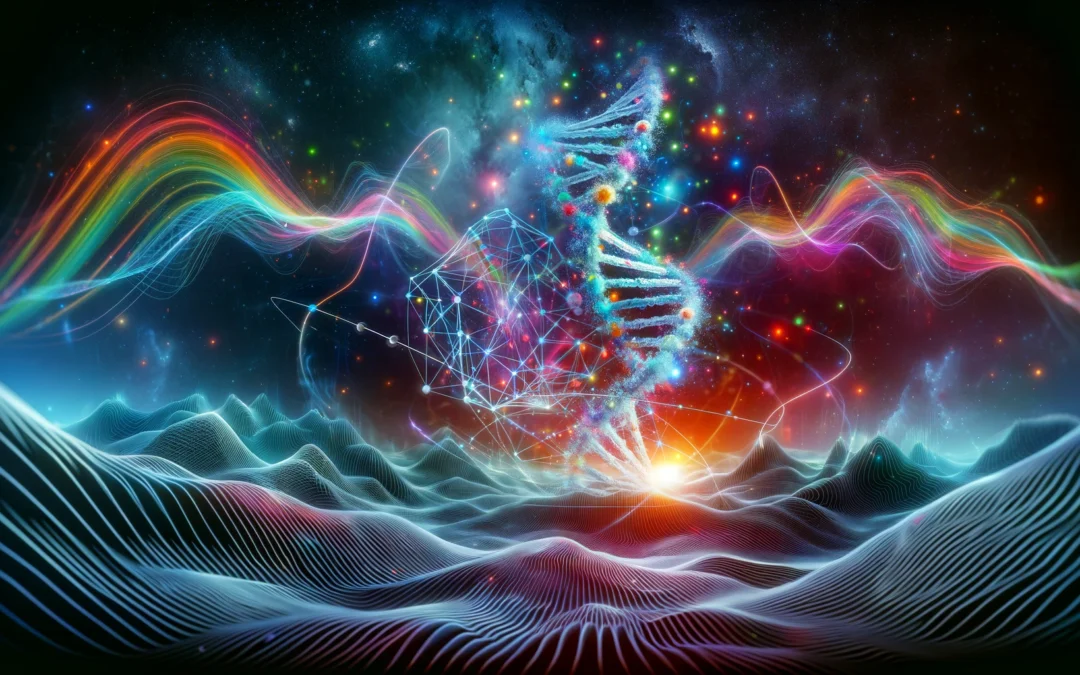In the intricate symphony of life, DNA, proteins, and RNA play a crucial role, resonating not just through their molecular structures but also through electromagnetic frequencies. The Resonant Recognition Model (RRM) has revolutionized our understanding of these macromolecules, revealing their capacity to interact through a complex ballet of electromagnetic resonances.
Recent studies have shown that biological molecules, including proteins, DNA, and RNA, exhibit electromagnetic resonances across a wide range of frequencies, from terahertz (THz) to kilohertz (KHz). These resonances are pivotal for the biological functioning of macromolecules and hold potential for technological advancements, such as in the development of molecular computers.
The RRM, developed to predict electromagnetic resonances in these biological molecules, is based on the distribution of free electron energy along the macromolecule. This model considers the periodicities within this energy distribution as critical for biological function and interaction with targets. By introducing the possibility of charge transfer through these macromolecules, the RRM identifies the conditions under which specific electromagnetic radiation, absorption, and resonance occur, corresponding to the energy distribution along the protein.
The RRM has been applied to predict electromagnetic resonances in various proteins, DNA, and RNA macromolecules, such as telomerase, telomere, and TERT mRNA. This model transforms linear sequences of amino acids or nucleotides into a numerical series, which is then analyzed in the frequency domain using Fourier Transform. The RRM uses a cross-spectral function to identify common frequency components that characterize similar biological functions or interactions within a group of sequences.
The RRM proposes that macromolecular interactions can be viewed as resonant energy transfers between molecules. Considering the conducting or semi-conducting properties of proteins, DNA, and RNA, the movement of charge through these macromolecules can result in specific electromagnetic radiation or absorption. The frequency of this electromagnetic field depends on the charge velocity, estimated to range from 10^13Hz to 10^15Hz, covering the spectrum from infrared to ultraviolet light.
Besides the typical charge transfer through the macromolecular backbone, other mechanisms like solitons, excitons, and phonons also play a role, especially in complex structures like alpha helices. These alternative forms of charge transfer produce different resonant frequencies, not necessarily related to biological function but still significant to the overall resonance of proteins and DNA/RNA macromolecules. This understanding has been experimentally validated in studies involving tubulin and microtubule macromolecules.
The discovery and application of the RRM mark a new era in understanding the electromagnetic aspect of biological macromolecules. This model opens doors to novel approaches in studying and manipulating biological functions and interactions at the molecular level. It also hints at a future where technological devices might harness these electromagnetic resonances, bridging the gap between biology and technology in ways previously unimagined. The RRM’s ability to predict and analyze these resonances not only enhances our understanding of the fundamental processes of life but also paves the way for innovative applications in medicine, computing, and beyond.










